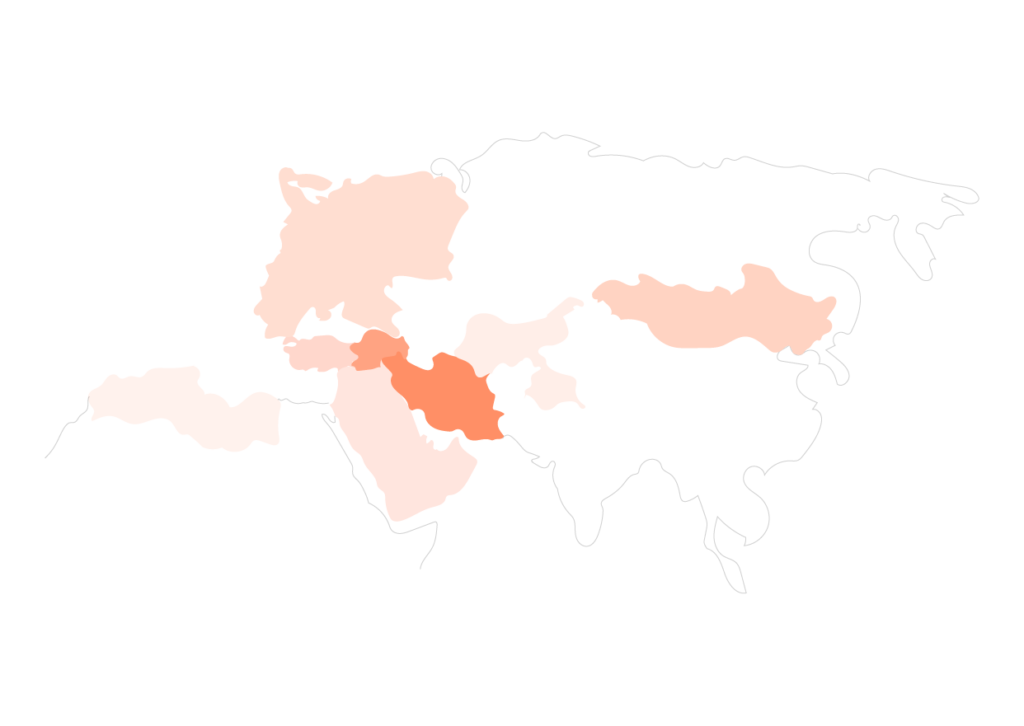In the midst of lockdown, seemingly random questions and arguments have become commonplace among friends and family. Upon seeing an ad for 50 percent off an AncestryDNA kit on Black Friday, I couldn’t resist wanting to know more about my genetic makeup.
I’d been curious about my genealogy since I heard stories about my parents’ ancestors, ranging from how my great-grandmother escaped Azerbaijan after a Russian invasion a century ago to details about my grandfather having spoken Turkish rather than Farsi as a first language.
Since it’s a little hard to get answers from someone who’s been dead for at least half a century, the second-best option was obvious: spitting into a tube (or rubbing the inside of my cheek) and having my saliva analyzed for the answers I was looking for.
I chose to use AncestryDNA because I found a better deal on Black Friday — and, to a lesser degree, because of their differentiation between Persians and other Middle Eastern groups, such as Turks and Arabs.
After sending my sample in and waiting 6 weeks, my results arrived. Some areas proved unsurprising, with Persian and Turkish/Caucasian being the largest part of my background, at 88 and 8 percent, respectively. Middle Eastern stood at 3 percent, and to my surprise, I was also 1 percent Northern Asian, centering around Mongolia.
Since other people in my family took 23andme tests, a 23andme promotion gave me the opportunity to test an additional sample for free shortly after I received my AncestryDNA results. I was intrigued by comparing the two results, so I took the test and waited.
Surprisingly, the results varied considerably and were much more diverse than the AncestryDNA results. They measured percentages to the nearest 10th and told me I am over 97.3 percent “Iranian, Caucasian and Mesopotamian,” and in lower amounts, “broadly Western Asian and North African” two groups that AncestryDNA didn’t detect.
Russian and trace amounts of Indian and Central Asian were also present in my DNA. My Mongolian DNA was the only one that was consistent between both companies at 1 percent. Such differences were surprising, considering the accuracy of a company relies on more tests being administered and AncestryDNA has administered 15 million tests total while 23andme has given 10 million tests.
The likeliest explanation for such differing results was either a difference in the customer base of each company or the methods used in determining genetic groups. Or maybe I brushed my teeth at different times before each test.
For those looking to find out more about their backgrounds, I’d recommend choosing which brand to use based on what you prioritize in learning about your genetics. Those looking for a more elaborate health report may opt for 23andme, as they examine your DNA for traits such as athleticism, taste (bitter or sweet) or how likely you are to be afraid of heights and public speaking. For an additional price, upfront or added on, you can unlock health reports for genetic diseases or disorders that DNA may predict.
Nevertheless, the experience is similar no matter which company you choose. Learning about your past can be an interesting and surprising endeavor, and for those who may not have a detailed family record or history, as was my case, it certainly helps one reconnect with their past.
So go ahead with spitting, sitting and seeing your results. The story of who you always thought you were might get a little updating.
























